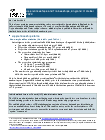Apprenticeship starts October 2020 – Apprenticeship starts halved during lockdown

Apprenticeships and traineeships: October 2020
Apprenticeship starts covering the provisional full 2019 to 2020 academic year and the latest number of apprenticeship service commitments.
 Association of Employment and Learning Providers managing director Jane Hickie said:
Association of Employment and Learning Providers managing director Jane Hickie said:
“The government has taken some welcome steps recently to support apprentices who have been made redundant but as the furlough scheme unwinds, we are sadly hearing of more apprentices becoming unemployed especially in sectors like hospitality.
“To help create new opportunities on the programme, ministers need to replicate the Kickstart scheme and start subsidising the wages of new young apprentices.
“They also need to do more to protect the jobs of tens of thousands of existing apprentices who can’t complete their programmes right now because of bureaucracy preventing them from being properly assessed while the covid restrictions remain.”
Latest figures for the provisional, full 2019/20 academic year (August 2019 to July 2020) show:
- Apprenticeship starts reported to date are 319,000
- Proportion of starts on standards was 74.7 per cent (238,400)
- Proportion of starts supported by ASA levy funds was 68.7 per cent (219,000)
- The proportion of starts by level was: • Intermediate level: 31.0 per cent (98,800)
- Advanced level: 43.6 per cent (139,000)
- Higher level: 25.5 per cent (81,200)
The proportion of starts by age group was:
- 16-18: 23.7 per cent (75,500)
- 19-24: 29.5 per cent (94,200)
- 25 and over: 46.8 per cent (149,300)
The number of apprenticeship starts reported to date for July 2020 was 17,900; in July 2019, the number reported at the same point was 25,700.
There have been 58,160 apprenticeship starts reported to date between 23 March and 31 July 2020, fewer than the 107,750 reported for this period at this point last year, a decrease of 46.0 per cent. As noted, final data will not become available until later in the year, therefore at this point it is unclear what the true number of starts in the affected period was or if the level of reporting at this point in the year has been affected by the lockdown.
To note also, as reported in the Apprenticeship and traineeships: April 2020 publication, which included data prior to the lockdown, latest reported to date starts for 2019/20 were down on the same point in the previous year, with starts in all months (except September) in 2019/20 reported to date also being lower than those reported at the same point in 2018/19.
Of the starts reported during this period in 2019/20:
- Learners aged 25 and over make up 62.2 per cent of starts; this was 54.6 per cent in the previous year.
- Intermediate apprenticeships accounted for 25.9 per cent of starts; this was 36.4 per cent in 2018/19.
- Higher apprenticeships accounted for 31.5 per cent of starts; this was 17.6 per cent in 2018/19.
- Business, Administration and Law, and Health, Public Services and Care were the dominant sector subject areas comprising 68.1 per cent of starts in 2019/20. These were also the main sector subject areas the previous year, but they represented a smaller proportion of starts (62.3 per cent).
Documents

Apprenticeships and traineeships main text: October 2020 update
PDF, 291KB, 15 pages
Apprenticeship and levy statistics: October 2020 main tables
MS Excel Spreadsheet, 78.3KB
Apprenticeship and levy statistics: October 2020 main tables
ODS, 53.7KB
This file is in an OpenDocument format
Vacancies and adverts posted on the Find An Apprenticeship website, by level, from June 2018 to August 2020
MS Excel Spreadsheet, 34.8KB
Vacancies and adverts posted on the Find An Apprenticeship website, by level, from June 2018 to August 2020
ODS, 23.7KB
This file is in an OpenDocument format

Apprenticeship and traineeships: October 2020 metadata for underlying data files
PDF, 111KB, 2 pages
Unrounded raw data set (framework, standard, SSA, level, age): August 2014 to July 2020, reported to date
List of supplementary files published during the 2019 to 2020 academic year: October 2020 update
MS Excel Spreadsheet, 58.1KB
Apprenticeship and traineeships: October 2020 pre-release access list
HTML
Details
Due to the impact of coronavirus (COVID-19) on further education and apprenticeship training activity, and the reporting of data, we replaced the planned further in-year statistics from the apprenticeship and traineeships: April 2020 release onwards. We will publish the end-of-year releases normally published in November, but replacing the remaining in-year dates enables us to provide releases with more relevant information to cover the period affected by the pandemic.
We intend to make headline statistics such as apprenticeship starts available on a regular basis, and to similar timescales to those currently, but we intend to repurpose our releases to focus on the most relevant information available. Please see the main text document for more information on the replacement to publications.
Email [email protected] to tell us about your key data needs. We’d particularly like to know how often you need data and how you’d like it broken down. For example, by age, level and individual framework or standard.
Read statistics at DfE to find out about any changes.
This release is an update to the apprenticeship and traineeships: August 2020 statistics publication and is a repurposed transitionary approach during the coronavirus (COVID-19) outbreak. See apprenticeships and traineeships: main text – August 2020 update, for more information.
We have updated official statistics within the publication to provide:
- the latest monthly apprenticeship starts covering the provisional, full 2019 to 2020 academic year.
- the latest number of apprenticeship service commitments.
For commentary and statistics relating specifically to the latest full academic year (2018 to 2019), see further education and skills: November 2019.
We may amend the content and timing of these statistics depending on user feedback and data reporting.











Responses